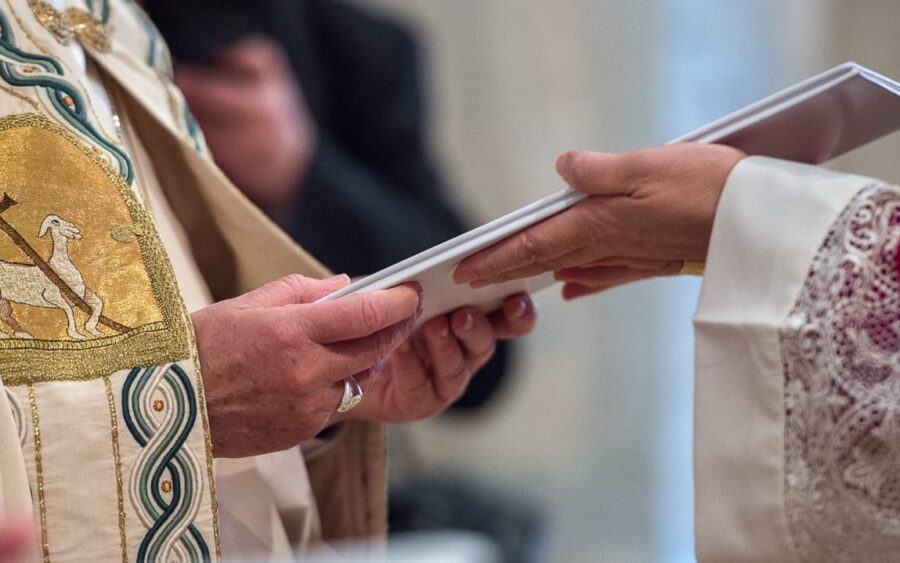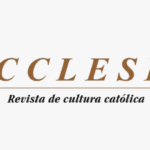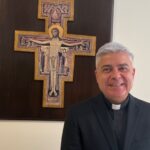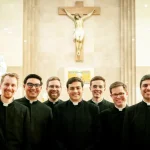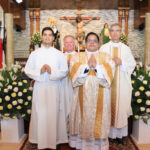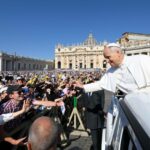The Pope has issued «Spes non confundit», the papal bull of the 2025 Holy Year, in which he makes a call in favor of prisoners, emigrants, the sick, the elderly, and young people trapped by drugs and corruption.
Spes non confundit
BULLA OF CONVOCATION
OF THE ORDINARY JUBILEE
OF THE YEAR 2025
FRANCIS
Bishop of Rome
Servant of the Servants of God
to all who read this letter, may hope fill your hearts
1. «Spes non confundit», «hope does not disappoint» (Rom 5:5). Under the sign of hope, the apostle Paul inspired encouragement in the Christian community of Rome. Hope is also the central message of the upcoming Jubilee, which, according to an ancient tradition, the Pope convocates every twenty-five years. I think of all the pilgrims of hope who will arrive in Rome to experience the Holy Year and of those who, unable to come to the city of the apostles Peter and Paul, will celebrate it in their local churches. May it be for everyone a moment of lively and personal encounter with the Lord Jesus, «door» of salvation (cf. Jn 10:7,9); with Him, whom the Church is called to proclaim always, everywhere, and to everyone as «our hope» (1 Tm 1:1).
Everyone hopes. Deep within every person, hope dwells as desire and expectation of good, even if unaware of what tomorrow will bring. However, the unpredictability of the future often evokes conflicting feelings: trust and fear, serenity and discouragement, certainty and doubt. We often find discouraged people who look to the future with skepticism and pessimism, as if nothing could bring them happiness. May the Jubilee be an occasion for all to rekindle hope. God’s Word helps us find its reasons. Let us be guided by what the apostle Paul wrote precisely to the Christians of Rome.
A Word of hope
2. «Therefore, since we are justified by faith, we have peace with God through our Lord Jesus Christ. Through him we have obtained access by faith to this grace in which we stand, and we boast in the hope of the glory of God. […] And hope does not disappoint, because the love of God has been poured out into our hearts through the Holy Spirit, who has been given to us» (Rom 5:1-2,5). The points of reflection that Saint Paul offers us here are many. We know that the Letter to the Romans marks a decisive step in his evangelizing activity. Until that moment, he had carried out his mission in the eastern part of the Empire, and now Rome awaits him, with all that it represents in the eyes of the world: a great challenge, which must be faced in the name of proclaiming the Gospel, which knows no barriers or borders. The Church of Rome was not founded by Paul, but he felt a strong desire to go there soon to bring everyone the Gospel of Jesus Christ, dead and risen, as a sign of hope that fulfills promises, leads to glory, and, rooted in love, does not disappoint.
3. Hope indeed is born of love and is founded on the love that flows from the Heart of Jesus pierced on the cross: «For if, while we were enemies, we were reconciled to God through the death of his Son, much more, now that we are reconciled, shall we be saved by his life» (Rom 5:10). And his life manifests in our faith, which begins with Baptism; it develops in obedience to God’s grace and, therefore, is animated by hope, which is always renewed and made unbreakable by the action of the Holy Spirit.
Indeed, the Holy Spirit, with his perennial presence in the path of the Church, is the one who radiates in believers the light of hope. He keeps it burning like an unquenchable flame, to support and strengthen our lives. Christian hope, in fact, does not deceive or disappoint, because it is founded on the certainty that nothing and no one will ever separate us from divine love: «Who shall separate us from the love of Christ? Shall tribulation, or distress, or persecution, or famine, or nakedness, or danger, or sword? […] But in all these things we are more than conquerors through him who loved us. For I am sure that neither death nor life, nor angels nor rulers, nor things present nor things to come, nor powers, nor height nor depth, nor anything else in all creation, will be able to separate us from the love of God in Christ Jesus our Lord» (Rom 8:35,37-39). This is why this hope does not give in to difficulties: because it is rooted in faith and nourished by charity, thus making it possible for us to move forward in life. Saint Augustine writes about this: «No one, indeed, lives in any kind of life without these three dispositions of the soul: believing, hoping, loving»[1]
4. Saint Paul is very realistic. He knows that life is made of joys and pains, that love is tested when difficulties increase and hope seems to collapse in the face of suffering. Still, he writes: «More than that, we rejoice in our sufferings, knowing that suffering produces endurance; and endurance, character; and character, hope» (Rom 5:3-4). For the Apostle, tribulation and suffering are the conditions proper to those who proclaim the Gospel in contexts of misunderstanding and persecution (cf. 2 Co 6:3-10). But in such situations, amid darkness, a light is perceived; it is discovered that what sustains evangelization is the strength that flows from the cross and the resurrection of Christ. And this leads to developing a virtue closely related to hope: patience. We are used to wanting everything immediately, in a world where haste has become a constant. There is no longer time to meet, and often even within families, gathering and talking calmly becomes difficult. Patience has been displaced by haste, causing serious harm to people. In fact, intolerance, nervousness, and sometimes gratuitous violence take its place, provoking dissatisfaction and closed hearts.
Likewise, in the age of internet, where space and time are replaced by the “here and now,” patience seems strange. If we could still contemplate creation with wonder, we would understand how essential patience is. Waiting for the changing seasons and their fruits; observing the life of animals and their cycles of development; having the simple eyes of Saint Francis who, in his Canticle of the Creatures, written 800 years ago, saw creation as a great family and called the sun “brother” and the moon “sister”[2]. Rediscovering patience greatly benefits oneself and others. Saint Paul often appeals to patience to emphasize the importance of perseverance and trust in what God has promised us, but above all, he testifies that God is patient with us, because he is «the God of perseverance and encouragement» (Rom 15:5). Patience, which is also a fruit of the Holy Spirit, keeps hope alive and consolidates it as a virtue and way of life. Therefore, let us learn to frequently ask for the grace of patience, which is the daughter of hope and at the same time sustains it.
A path of hope
5. This intertwining of hope and patience clearly shows how the Christian life is a journey, which also needs powerful moments to nourish and strengthen hope, an irreplaceable companion that allows us to glimpse the goal: the encounter with the Lord Jesus. I like to think that it was precisely a grace-filled journey, animated by popular spirituality, that preceded the call for the first Jubilee in the year 1300. In fact, we cannot forget the various ways in which the grace of forgiveness was poured out abundantly upon the holy People of God. For example, let us remember the great “forgiveness” that Saint Celestine V wanted to grant to those who went to the Basilica of Santa Maria di Collemaggio in L’Aquila during August 28-29, 1294, six years before Pope Boniface VIII instituted the Holy Year. Thus, the Church was already experiencing the jubilee grace of mercy. Even earlier, in 1216, Pope Honorius III had accepted Saint Francis’ plea for indulgence for those visiting the Porziuncola during the first two days of August. The same can be said for the pilgrimage to Santiago de Compostela; indeed, Pope Calixtus II, in 1122, granted that a Jubilee be celebrated at that Sanctuary whenever the feast of Saint James the Apostle coincided with a Sunday. It is good that this “extended” form of jubilee celebrations continues, so that the power of God’s forgiveness sustains and accompanies the journey of communities and individuals.
No coincidence that pilgrimage expresses a fundamental element of every jubilee event. Setting out on a journey is a typical gesture of those seeking the meaning of life. Walking pilgrimage greatly fosters the rediscovery of the value of silence, effort, and the essential. Also next year, the pilgrims of hope will walk ancient and modern paths to live intensely the jubilee experience. Moreover, in the city of Rome itself, there will be other faith itineraries added to the traditional ones of the catacombs and the seven churches. Traveling from one country to another, as if crossing borders, moving from one city to another in contemplation of creation and works of art, will allow the gathering of different experiences and cultures, to preserve within oneself the beauty that, harmonized by prayer, leads to thanking God for the wonders He performs. The jubilee churches, along the itineraries and within the city, can be oases of spirituality to revitalize the journey of faith and drink from the springs of hope, especially by approaching the sacrament of Reconciliation, an irreplaceable starting point for a true path of conversion. Particular attention should be given in local churches to the preparation of priests and the faithful for confessions and access to the sacrament in its individual form.
To the faithful of the Eastern Churches, especially those already in full communion with the Successor of Peter, I wish to extend a special invitation to this pilgrimage. They, who have suffered so much for their fidelity to Christ and the Church, often even unto death, should feel especially welcomed in this Rome, which is Mother also for them and which guards many memories of their presence. The Catholic Church, enriched by its ancient liturgies, theology, and spirituality of the Fathers, monks, and theologians, wishes to symbolically express its welcome to them and to their Orthodox brothers and sisters, in a time when they are already living the pilgrimage of the Via Crucis; with which they are often forced to leave their homelands, their holy lands, from which violence and instability expel them toward safer countries. For them, the experience of being loved by the Church — which will not abandon them but will follow them wherever they go — makes the sign of the Jubilee even stronger.
6. The Holy Year 2025 continues the sequence of previous grace-filled events. In the last ordinary Jubilee, we crossed the threshold of two thousand years since the birth of Jesus Christ. Then, on March 13, 2015, I convened an extraordinary Jubilee to manifest and facilitate the encounter with the «Face of mercy» of God[3], the central announcement of the Gospel for all people of all times. Now, the time has come for a new Jubilee, to fling open the Holy Door once again and offer the living experience of God’s love, which stirs in the heart the sure hope of salvation in Christ. At the same time, this Holy Year will guide the way toward another fundamental anniversary for all Christians: in 2033, the two thousand years of Redemption accomplished through the passion, death, and resurrection of the Lord Jesus will be celebrated. Thus, we face a journey marked by great stages, in which God’s grace precedes and accompanies the people walking enthusiastically in faith, diligent in charity, and perseverant in hope (cf. 1 Thes 1:3).
Supported by this long tradition and with the certainty that this Jubilee Year will be an intense experience of grace and hope for the entire Church, I decree that the Holy Door of Saint Peter’s Basilica in Vatican will be opened from December 24, 2024, thus beginning the ordinary Jubilee. The following Sunday, December 29, 2024, I will open the Holy Door of the Cathedral of Saint John Lateran, which on November 9 of this year will celebrate the 1700th anniversary of its dedication. Then, on January 1, 2025, the solemnity of Saint Mary, Mother of God, the Holy Door of the papal basilica of Santa Maria Maggiore will be opened. Finally, on Sunday, January 5, the Holy Door of the papal basilica of Saint Paul Outside the Walls will be opened. These last three Holy Doors will be closed on Sunday, December 28, 2025.
I also establish that on Sunday, December 29, 2024, in all cathedrals and co-cathedrals, diocesan bishops will celebrate the Eucharist as the solemn opening of the Jubilee Year, according to the Ritual prepared for the occasion. In the case of a celebration in a co-cathedral church, the bishop may be replaced by a delegate expressly appointed for this purpose. Let the pilgrimage from a chosen church for the collectio toward the cathedral be the sign of the hope-filled journey that, illuminated by God’s Word, unites believers. Some passages of this document should be read during the pilgrimage, and the jubilee indulgence announced to the people, which can be obtained according to the prescriptions contained in the same Ritual for celebrating the Jubilee in local churches. During the Holy Year, which in local churches will end on Sunday, December 28, 2025, efforts should be made to ensure that the People of God fully participate in both the proclamation of God’s grace and the signs that attest to its efficacy.
The ordinary Jubilee will conclude with the closing of the Holy Door of Saint Peter’s Basilica in the Vatican on January 6, 2026, the Feast of the Epiphany of the Lord. May the light of Christian hope reach all people, as a message of God’s love directed to everyone. And may the Church be a faithful witness of this proclamation everywhere in the world.
Signs of hope
7. In addition to reaching the hope given us by God’s grace, we are also called to rediscover it in the signs of the times that the Lord offers us. As Vatican II affirms, «it is the ongoing duty of the Church to scrutinize deeply the signs of the times and interpret them in the light of the Gospel, so that, adapting to each generation, the Church may respond to the perennial questions of humanity about the meaning of present and future life and their mutual relationship»[4]. Therefore, it is necessary to pay attention to all that is good in the world so as not to fall into the temptation of considering ourselves overcome by evil and violence. In this sense, the signs of the times, which contain the longing of the human heart, in need of God’s saving presence, must be transformed into signs of hope.
8. May the first sign of hope be translated into peace for the world, which is once again immersed in the tragedy of war. Humanity, forgetful of past dramas, faces a new and difficult test when it sees many populations oppressed by brutality and violence. What more



